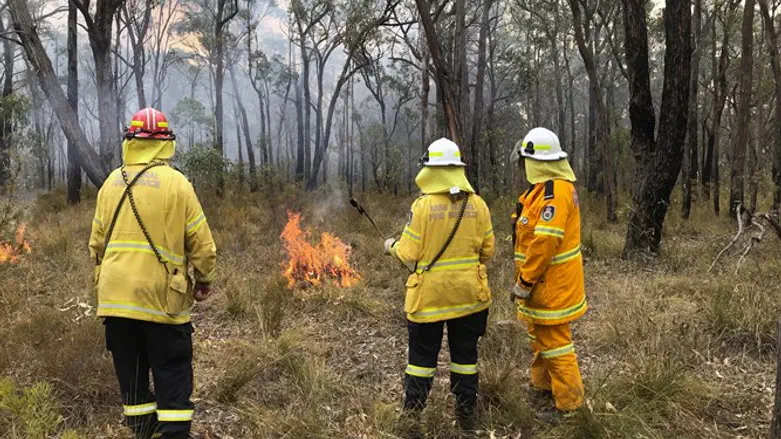
Australian Prime Minister Scott Morrison called up 3,000 reservists to battle escalating bushfires on Saturday, as soaring temperatures threatened to spread fires to populated areas.
"Just around half an hour ago the governor-general signed off on the call-out of the Australian Defense Force Reserve to search and bring every possible capability to bear by deploying army brigades to fire-affected communities," Morrison said.
"In recent times, particularly over the course of the balance of this week, we have seen this disaster escalate to an entirely new level."
The increasing temperatures, which have risen to 120 degrees Fahrenheit (48.9 C) in Sydney's suburbs and 111 degrees Fahrenheit (44 C) in the capital city of Canberra - breaking a heat record of 80 years - and strong winds have raised the risk of further wildfires, which have already taken the lives of 23 people, burned about 12.35 million acres (5 million hectares) and razed over 1,500 houses.
"Virtually unstoppable" bushfires on Kangaroo Island, Australia's third-largest island, on Saturday killed two people, destroyed million-dollar properties and burned up to 100,000 hectares of land, including more than 35,000 acres (14,000 hectares) of Flinders Chase National Park. Dozens of koalas were severely burned and it's feared that tens of thousands of animals died in the national park.
Every state in Australia has been affected by fires but the worst hit has been the southeastern states of New South Wales (NSW) and Victoria, both popular tourist spots. In NSW, fires have burned over 8.8 million acres (3.6 million hectares) of land and ravaged about 1,300 homes, with over 130 fires still burning.
NSW declared a 7-day state of emergency on Thursday following the death of seven people in 24 hours. Thousands of people evacuated from the southern coast to avoid the rising temperatures predicted for the weekend. The Rural Fire Service established a "tourist leave zone," urging all tourists in the area to evacuate before Saturday. "Do not be in this area on Saturday," the fire service stated.
"I'm pleased to say that we've never been as prepared as we are today for the onslaught we're likely to face," New South Wales Premier Gladys Berejiklian told reporters. "All of the major road networks are still open but we can't guarantee that beyond the next few hours. So there are still windows for people to get out."
A fire in a national park west of Sydney, the capital of NSW could potentially spread into the western suburbs of Sydney and residents and tourists in the area have been warned to evacuate.
"Our message has been to make sure you leave yesterday," said Rural Fire Service Commissioner Shane Fitzsimmons.
The neighboring state of Victoria declared a state of disaster on Saturday as three fires joined together, forming a blaze the size of Manhattan, or 14,826 acres (6000 acres). Over 494,210 acres (200,000 hectares) of land have already been burned by fires with 48 fires still burning.
A fire sparked by a lightning strike in the town of Mallacoota last week forced about 4,000 tourists and residents to flee to the beaches.